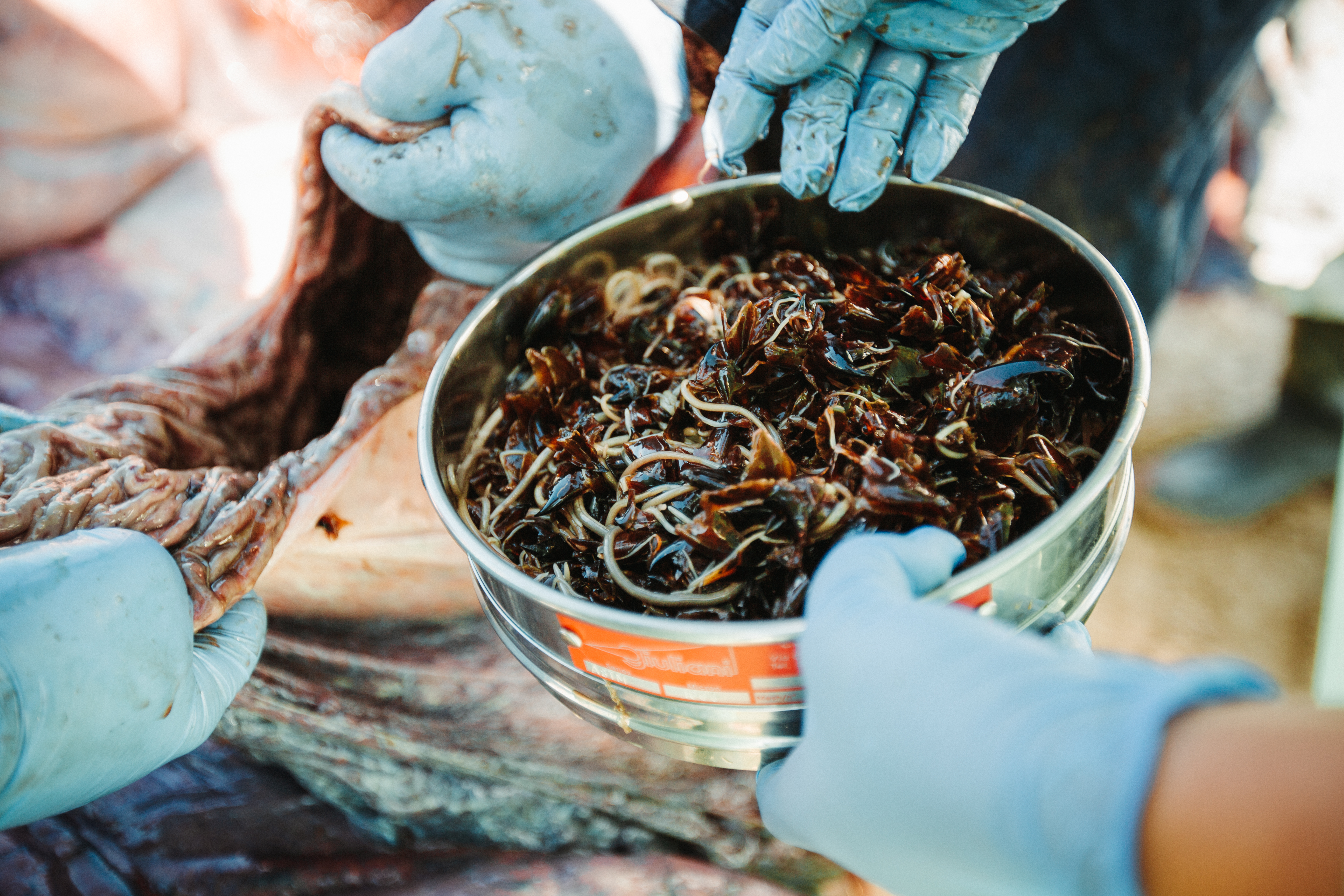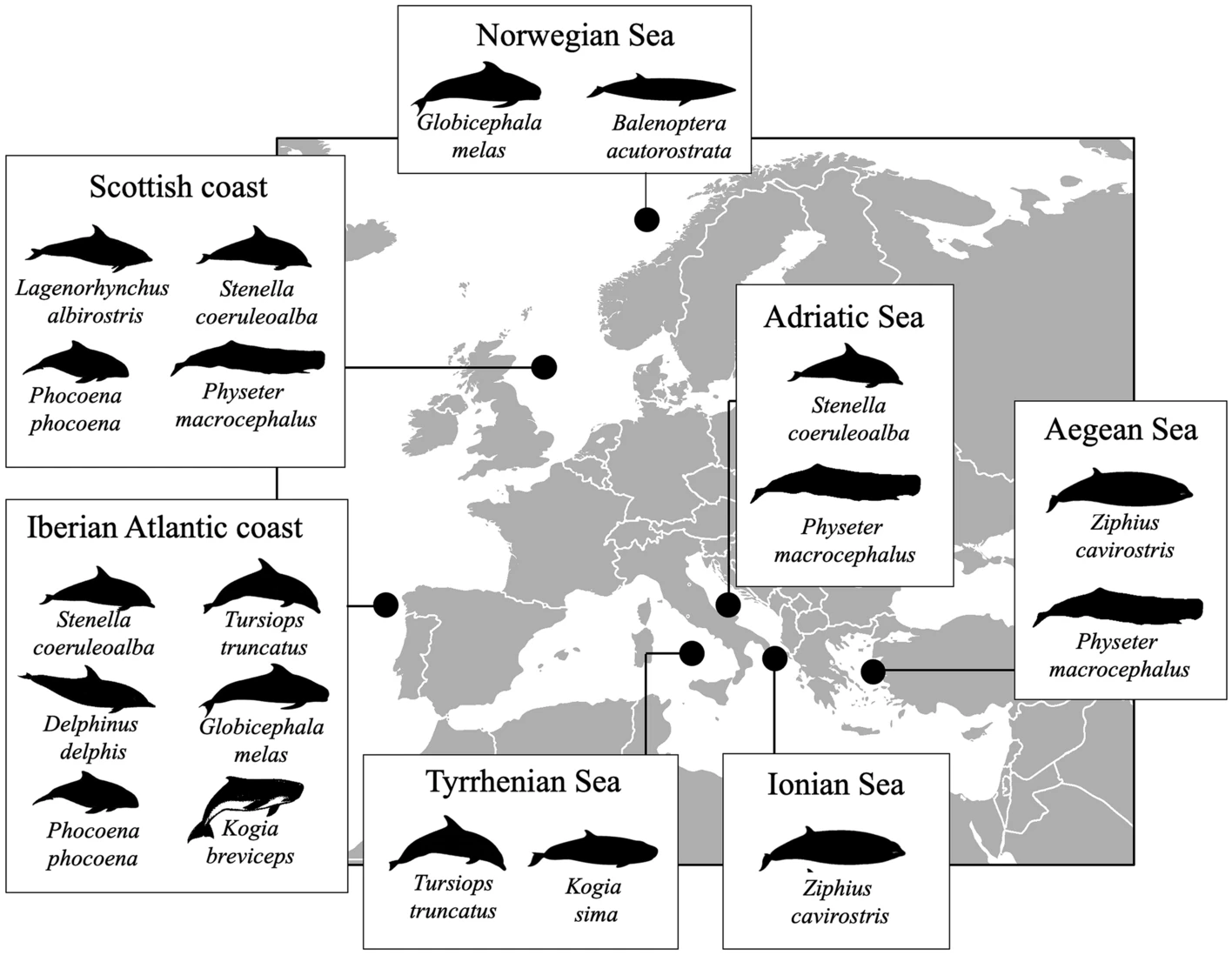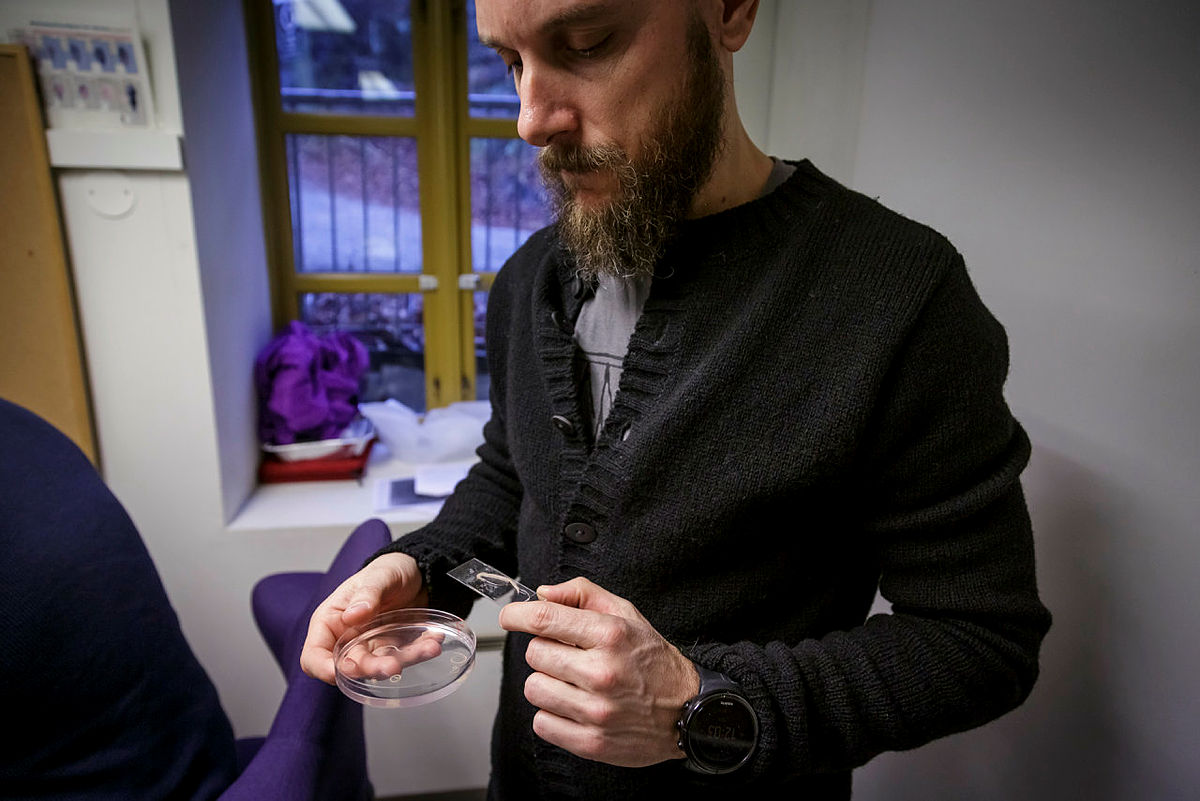Researchers looked for worms inside stranded whales and found too many to count

Norwegian and European researchers sampled cetaceans from the coasts of the Northeast Atlantic Ocean and the Mediterranean Sea. Cetaceans’ stranding Emergency Response Team at work on a sperm whale stranding event at Vasto, Italy, 2014.
Photo: Paolo Cipriani / Institute of Marine ResearchPublished: 19.09.2022
“Whales are the endgame for Anisakis parasites, often called kveis or whale worms” says researcher Paolo Cipriani.
“While we often find them in the flesh or gut of fish, this is most likely just a mean of transport to reach marine mammals, their definitive host.
Whales are the first and final stage of a complex cycle
In cetaceans (whales, dolphins and porpoises), Anisakis develop and transform, mature, mate, and produce thousands of eggs, closing its complex life cycle inside a chain of host organisms.
The eggs are expelled through feces, hatch, larvae are eaten by crustaceans which are then eaten by fish. Cetaceans are the apex predators and final stage. (See life cycle figure.)
Found a wide range of both whales and their worms
In a study recently published in Scientific Reports, researchers from the Institute of Marine Research (IMR) and La Sapienza University of Rome, together with several other European collaborators on the field, examined the stomach of 34 stranded cetaceans, looking for parasites.
In most cases, the mammals were full of worms to the extent that it was impossible to count or estimate the total infection. We are talking thousands.
In whales, the worms are only found inside the digestive system. They are not able to enter the meat and risk infecting whale consuming humans by accident.

The researchers genetically analyzed hundreds worms from 11 cetaceans species, including harbor porpoises, dolphins, baleen whales and sperm whales.
The animals stranded along the European coast of the Northeast Atlantic Ocean and the Mediterranean Sea (including Norway, Faroe Islands, Scotland, Spain, Italy, and Greece).
Reseachers now know the worms’ preferences and distribution
“We genetically identified the worms, which belonged to five species, and found a clear pattern of their geographical distribution and host preference,” Cipriani says.
The Anisakis species showed a preference for certain cetacean groups: Anisakis simplex, common in the Norwegian waters, is a generalist in both fish transport and definitive host, preferring dolphins and baleen whales.
Other species, like A. physeteris, is only found in in sperm whales and pygmy sperm whales.

Sampling localities of Anisakis spp. of the occasional cetacean strandings, which resulted in 34 specimens belonging to 11 species. Figure from the scientific paper.
Cipriani explains this by natural selection and millions of years of co-evolution and co-adaption. The “correct” parasite make it to the specific definitive host.
Shows that the food webs are intact
Researcher Cipriani is happy to have found such a large diversity of Anisakis.
“The stable presence of these parasites in the food webs of northern ecosystems are paradoxically good news”.
“Despite massive human impact to nature, the conditions to maintain the worm’s complex life cycle hold. This indicates that the food chain and a part of the ecosystem is stable, and that whale populations are recovering from the 18th century indiscriminate whaling, says Cipriani.
The novel baseline research also lets the researchers look for changes in the future.
How the IMR looks for Anisakis
The IMR already has a continuous surveillance of presence of parasites in fish, as this is a consumer concern.
To follow up on the mammals, the parasite researchers have recently started a cooperation with the marine mammal group at the IMR. They will look at cetaceans and also seals, as they are the definitive host and home for other anisakid species typical of northern waters.

Reference
Cipriani, Paolo, Marialetizia Palomba, Lucilla Giulietti, Federica Marcer, Sandro Mazzariol, Mario Santoro, Renato Aco Alburqueque et al. "Distribution and genetic diversity of Anisakis spp. in cetaceans from the Northeast Atlantic Ocean and the Mediterranean Sea." Scientific reports 12, no. 1 (2022): 1-18. https://doi.org/10.1038/s41598-022-17710-1
